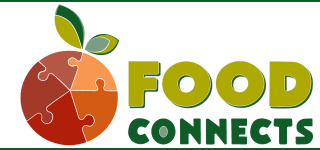Do you have a worm guy? Brattleboro Union High School (BUHS) now does. Thanks to a generous donation from Brattleboro’s Rich Earth Institute, 25 students in the BUHS Student Educational Assistance (SEA) program received compost-eating worms, compost bedding, and a worm bin. All these ingredients add up to a new lesson in food systems: vermicompost.
Vermi (worms) compost (compost) is a beautiful synergy between students’ food waste and red wiggler worms. Though red wigglers are in the spotlight, crucial supporting actors include: potworms, red & white mites, centipedes, beneficial bacteria, and fungi. This micro-community of digesters will usually show up in your compost naturally or tag along with the worms when you purchase them.
Worms don’t have teeth (or eyes, or ears, or lungs), so they need these other decomposers to help break down the food into soft, gum-able pieces. As the food passes through the worms, it turns into “worm castings,” a rich, dark soil amendment that will add nutrients into your garden.
Classroom Connections: Soil Lessons That Stick
This vermicompost hands-on learning is part of a larger curriculum on soil health. Students will learn about soil microorganisms, soil structure, and soil chemistry.
For today, students involved in the Youth Empowered in Agriculture program at BUHS helped put air vents in the worm bin lids, mix together some worm bedding and food scraps, and made signs showing what the worms can and cannot eat. While not all the students wanted to look at the worms, all the students enjoyed hearing that worms gum, rather than chew, their food – like “grandpa shark” from the famous baby shark song.
Rain is a factor for Vermont farmers, increasingly flooding as well. So, any food systems or agricultural education for students needs to include soil health as part of its curriculum. Soil structure is especially important in light of recent VT flooding, as some soils erode into the watershed less than others.
Worms, along with fungi and bacteria, help give soil structure and “glue” soil particles together, helping protect against soil erosion in rain and flood conditions.
To set up your own worm bin, this list (and your local Farm to School coach) can help you get started:
Find ~1 pound of red wigglers, a plastic or wood bin with small drainage & air holes, and some bedding (ex. shredded cardboard & free coffee chaff from Mocha Joe’s) enough to cover the bottom of the bin about 3” below and 3” above the worms. Make sure you have a drainage tray or stack 2 bins together to catch any water that drains out.
Mix ingredients into the bin. Moisten the bedding until it holds its shape when you squeeze it. Always keep the bedding at this moisture level.
Worried about the worms escaping? They run away from light, so keep an indirect light on for the first few days until they settle into their new home.
Worried about smell? Make sure fruit & vegetable scraps are fully covered with bedding. They eat ½ their weight per day, so don’t add too many scraps. Don’t let the bedding stay too wet.
Classroom or home activities you can try with your worms:
Use the water runoff caught in your drainage tray or bottom bin (aka compost “tea”) as fertilizer in your garden or hydroponic system.
Look at the castings or tea under a microscope (look out for nematodes and other microscopic organisms).
Use soda bottles and a strainer to do a slake test comparing the structural integrity of worm castings, soil mixed with worm castings, and non-enriched soil samples.
Plant two peas in two cups, compare growth of the compost-free and compost-enriched soil.







